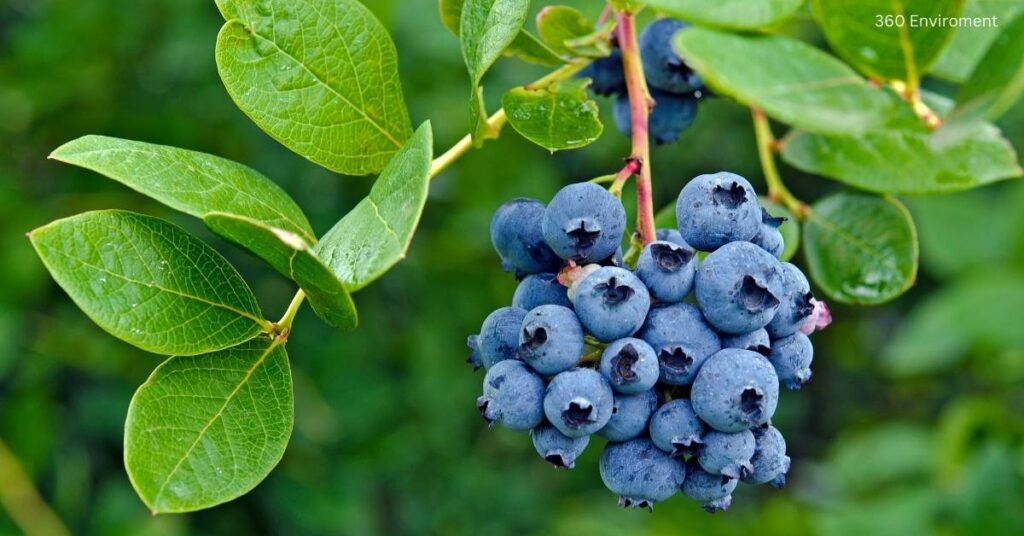Spain, a country known for its Mediterranean climate, has recently become a rising star in Spain blueberry production. While traditionally recognized for crops like olives, grapes, and citrus fruits, Spain has shifted its agricultural landscape by embracing high-value crops such as blueberries. Blueberry cultivation in Spain has not only brought economic benefits but has also raised questions about the environmental impact of this industry and its sustainability in the long term.
In this comprehensive environmental niche article, we will explore the growing importance of Spain blueberry, the environmental considerations associated with its production, and the sustainability measures that can ensure this industry flourishes without causing harm to ecosystems.
1. The Rise of Blueberry Production in Spain

1.1 A Growing Industry
Spain blueberry production has seen significant growth over the past two decades. In 2005, blueberries were almost unheard of in Spanish agriculture, but by 2020, Spain had become the fourth-largest blueberry producer in Europe, behind Poland, Germany, and the Netherlands. The main regions for Spain blueberry cultivation include Huelva, in Andalusia, and other parts of southern Spain where favorable climates support the growth of this temperate fruit.
The increase in Spain blueberry production is driven by several factors:
- Global Demand: Blueberries are widely recognized for their health benefits, including high levels of antioxidants, vitamins, and fiber. This has led to a surge in global demand, particularly in Europe and the United States.
- Export Opportunities: Spain’s geographic position provides access to major markets in Europe, and its mild climate allows for an extended growing season compared to other European countries, giving Spanish producers a competitive advantage.
1.2 Blueberry Varieties Grown in Spain
Spanish farmers primarily cultivate Southern Highbush blueberry varieties, which are better suited to the warm climates found in southern Spain. These varieties require fewer chilling hours than traditional Northern Highbush blueberries, making them ideal for Mediterranean regions.
Popular Southern Highbush varieties in Spain include:
- Emerald: Known for large fruit and early harvests.
- Jewel: A highly productive variety with large berries.
- Snowchaser: A very early variety, allowing Spanish growers to access markets before other producers.
By growing these varieties, Spanish blueberry producers can meet early-season demand in international markets and offer fresh fruit when other regions are not yet in harvest.
2. Environmental Impact of Blueberry Cultivation in Spain

2.1 Water Consumption
One of the primary environmental concerns associated with Spain blueberry cultivation is water use. Blueberries require consistent moisture and irrigation, particularly in regions like southern Spain, where droughts are frequent, and water resources are often limited.
In Huelva, where most of Spain blueberry crops are grown, water for irrigation is sourced from rivers, reservoirs, and sometimes underground aquifers. Over-extraction of water from these sources can lead to:
- Water shortages for other agricultural sectors and local communities.
- Aquifer depletion, which can cause subsidence and affect water quality.
- Ecosystem disruption, particularly in wetlands and river systems that rely on stable water flows.
Efficient water use is crucial to the sustainability of the Spain blueberry industry. Advanced irrigation systems such as drip irrigation have been widely adopted by Spanish farmers to reduce water waste. Drip irrigation delivers water directly to the roots of the plants, minimizing evaporation and runoff.
2.2 Soil Health and Fertilization
Blueberries thrive in acidic soils, typically with a pH level between 4.5 and 5.5. However, much of southern Spain’s soil tends to be more alkaline, requiring farmers to amend the soil to create suitable growing conditions.
To lower the pH and improve soil structure, farmers use inputs such as sulfur and organic matter like pine bark or peat moss. While these practices are necessary for successful Spain blueberry cultivation, they can have environmental consequences:
- Soil degradation if excessive amendments alter the natural composition of the soil.
- Eutrophication from runoff containing fertilizers and soil amendments, which can lead to nutrient pollution in nearby water bodies.
Sustainable soil management practices are essential to minimize these impacts. Cover cropping, crop rotation, and the use of organic fertilizers can help maintain soil health and reduce the need for chemical inputs.
2.3 Pesticides and Biodiversity
Blueberries, like many crops, are susceptible to pests and diseases. In Spain, common blueberry pests include the spotted wing drosophila (Drosophila suzukii), a fruit fly that lays eggs in ripe fruit, and mites that feed on the plants. Diseases such as root rot and fungal infections are also prevalent, particularly in humid climates.
To protect their crops, farmers often rely on pesticides and fungicides. However, the excessive use of these chemicals can have negative environmental effects, including:
- Harm to non-target species, such as pollinators and beneficial insects.
- Pesticide runoff, which contaminates nearby water bodies and soil.
- Reduction in biodiversity as ecosystems are disrupted by chemical inputs.
Integrated Pest Management (IPM) practices offer a more sustainable approach to managing pests and diseases in Spain blueberry crops. IPM combines biological controls, such as introducing natural predators, with targeted chemical use and cultural practices to minimize environmental harm.
2.4 Greenhouse Gas Emissions
Spain blueberry production has a relatively low carbon footprint compared to other crops. However, certain factors contribute to greenhouse gas emissions:
- Fertilizer application releases nitrous oxide (N2O), a potent greenhouse gas.
- Transportation emissions occur when blueberries are exported to distant markets, particularly by air freight.
To reduce the carbon footprint of Spain blueberry cultivation, Spanish producers can implement practices such as precision agriculture, which minimizes fertilizer use, and shift toward more sustainable transportation methods like sea freight, which has lower emissions than air freight.
3. Sustainability Efforts in Blueberry Production

3.1 Organic Blueberry Farming
In response to growing consumer demand for environmentally friendly products, some Spanish blueberry farmers have transitioned to organic farming methods. Organic Spain blueberry farming avoids synthetic pesticides and fertilizers, focusing instead on:
- Natural pest control, such as beneficial insects and organic-approved substances like neem oil.
- Compost and organic fertilizers to maintain soil fertility.
- Sustainable water use through practices like rainwater harvesting and efficient irrigation systems.
While organic farming is generally better for the environment, it can be more challenging due to lower yields and higher production costs. Nevertheless, organic Spain blueberries often command higher prices, making them an attractive option for farmers committed to sustainability.
3.2 Water Conservation Initiatives
Recognizing the need to conserve water in a region prone to droughts, many Spanish blueberry growers have adopted water-saving technologies. Drip irrigation, as mentioned earlier, is one of the most widely used systems for reducing water use. Some farmers have also implemented soil moisture sensors to monitor water levels in real-time, allowing for more precise irrigation scheduling.
Additionally, efforts to recycle water used in irrigation and to harvest rainwater have helped some farms reduce their reliance on external water sources.
3.3 Biodiversity Conservation
Preserving local biodiversity is another priority for environmentally conscious blueberry growers. Maintaining hedgerows, planting native species, and creating wildlife corridors on farms helps support a range of species, including pollinators and beneficial insects.
Farmers are also encouraged to adopt pollinator-friendly practices, such as reducing pesticide use during bloom periods and providing habitat for bees and other pollinators. Given that blueberries are pollinated by bees, ensuring a healthy pollinator population is critical for the success of the crop.
4. Economic and Environmental Benefits of Blueberry Production

4.1 Economic Opportunities
The rise of Spain blueberry cultivation has provided significant economic benefits to farmers and rural communities. Blueberries are a high-value crop, and their growing popularity in international markets has allowed Spanish producers to tap into new revenue streams.
In regions like Huelva, Spain blueberry production has created jobs and contributed to the local economy. Moreover, the success of Spanish blueberries in the export market has solidified the country’s position as a major player in the global berry industry.
4.2 Environmental Benefits
While the environmental impact of blueberry farming can be significant, there are also potential benefits when sustainable practices are adopted:
- Carbon sequestration: Blueberry bushes are perennial plants that, when managed well, can help sequester carbon in the soil. Increasing organic matter through practices like cover cropping and composting can enhance this carbon sequestration potential.
- Biodiversity enhancement: Farms that prioritize biodiversity through the preservation of native plants, hedgerows, and pollinator habitats contribute to ecosystem health.
- Reduced land pressure: Blueberries are a high-yielding crop that can be grown on relatively small parcels of land. This reduces the need for land conversion and helps preserve natural habitats.
5. Future Challenges and Solutions

5.1 Climate Change
Climate change presents both challenges and opportunities for Spain blueberry production. Rising temperatures may extend the growing season, allowing farmers to produce more fruit. However, higher temperatures can also stress blueberry plants, particularly during critical periods like flowering and fruiting. Water shortages, driven by more frequent droughts, are another significant concern.
To adapt to climate change, Spanish blueberry growers will need to:
- Invest in drought-resistant varieties that can tolerate higher temperatures and lower water availability.
- Continue improving water management practices, including the use of advanced irrigation systems and water recycling technologies.
- Develop strategies to cope with extreme weather events, such as floods or late frosts.
5.2 Sustainability Certification
As consumers become more conscious of the environmental impact of their food choices, obtaining sustainability certifications such as GlobalGAP or Rainforest Alliance can provide a competitive edge in the market. These certifications ensure that farms meet specific environmental, social, and economic standards, offering reassurance to consumers that the products they purchase are responsibly grown.
Conclusion
The rise of Spain blueberry cultivation has brought both economic opportunities and environmental challenges. While water use, pesticide application, and soil management are key areas of concern, sustainable practices such as organic farming, efficient water use, and biodiversity conservation offer a path toward a more environmentally friendly future.
As the global demand for blueberries continues to rise, the Spanish blueberry industry must prioritize sustainability to ensure long-term success. By adopting innovative solutions and working to mitigate the environmental impacts of cultivation, Spain can continue to be a leader in blueberry production while protecting its valuable ecosystems.
Read More: Wind Shake in Oak: Understanding Its Causes and Impacts

